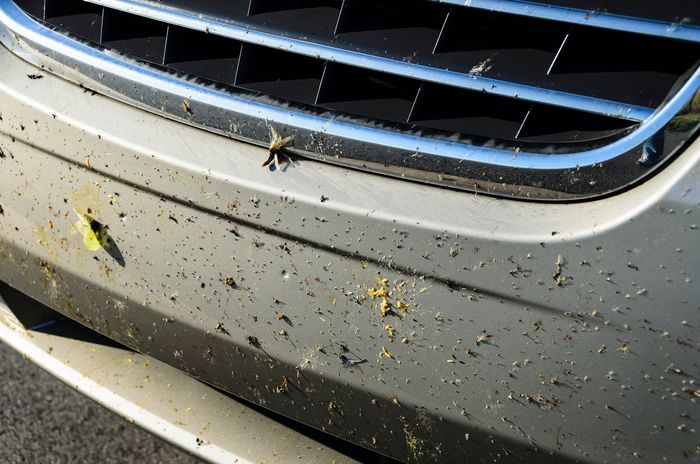We consider ourselves service journalists. We do our best to bring you actionable information and try to put it in perspective that helps you make the right car-buying decision for you.
This article won’t do this. This is one of those articles we write because something seems interesting. There’s nothing you can do with it. Thanks for your time, anyway.
Counting dead bugs
A group of scientists in Denmark enjoys counting the number of dead bugs on windshields. Good on them. Everyone needs a passion.
They’ve come to a conclusion: Denmark’s population of insects is shrinking. It seems to be happening elsewhere, too.
Read: Earth’s insect population — pivotal for the world’s food supply — shrinks 27% in 30 years
Down 80% in one study
From 1996 to 2017, the Washington Post explains, Professor Anders Moller of Paris-Saclay University drove a car along the same route in Denmark’s Jutland peninsula. He counted the number of bug splatters each year.

Fewer bugs on your car? Scientists say the insect population is declining.
istock
The result? Sudden bug death declined by 80% along one of his routes and 97% along the other.
Moller used a series of rental cars (ever the scientist, he published a list), so it’s possible that aerodynamic enhancements in cars might explain some of the difference.
Car designers: This isn’t aerodynamics
But career automotive designer Kevin Golsch tells the Washington Post it’s not likely. “I’ve done a lot of studies on contamination of sensors, especially for autonomous vehicles,” Grolsch said. “And I think most everybody’s given up on trying to influence what happens at the vehicle level for dust and particles and rain.”
Raindrops are often heavier than bugs. If windshields can’t push them out of the way, they probably can’t push bugs out of the way, either.
A similar study out of England solved the wind tunnel problem by counting bug splatters on license plates – the one part of a car that will probably never be aerodynamic. Researchers there found a 50% drop in gross splats between 2004 and 2019.
Don’t miss: New Zealand floats first-of-its-kind climate tax on livestock flatulence
Wired reports, “the research included vintage cars up to 70 years old to see if their less aerodynamic shape meant they killed more bugs, but it found that modern cars actually hit slightly more insects.”
The lesson for you? We told you there wouldn’t be one. But it’s not your imagination. The world’s bug population seems to be declining. Our clean windshields are the proof.
This story originally ran on KBB.com.



